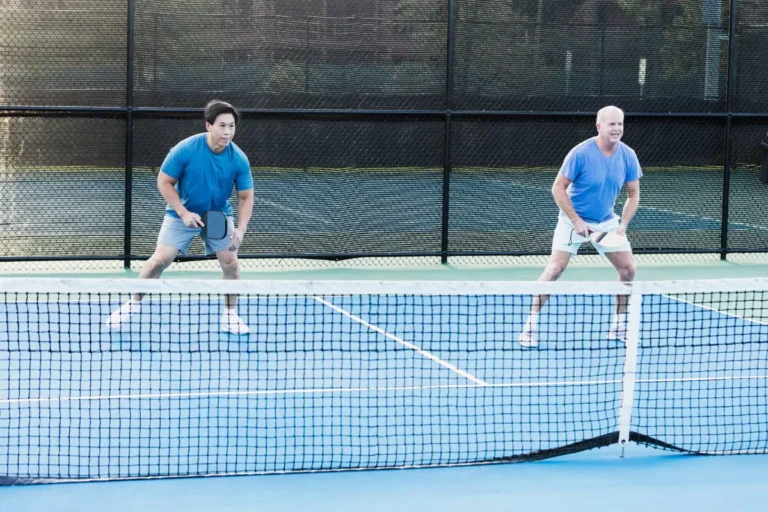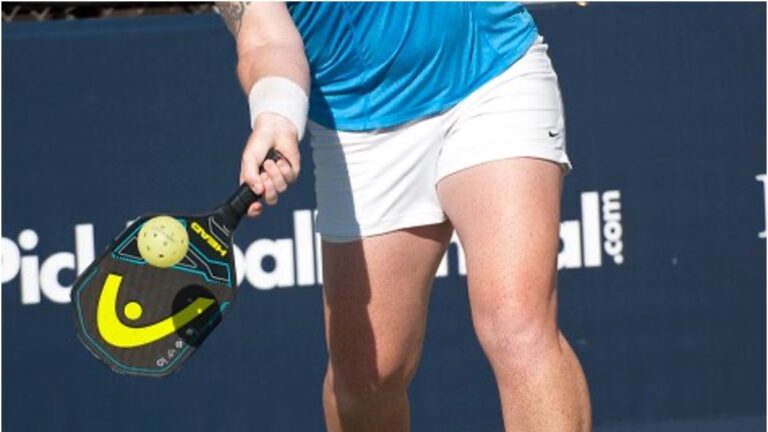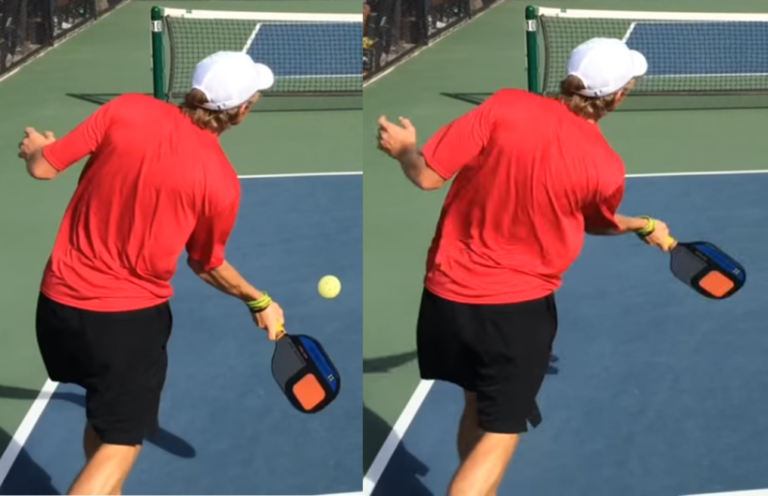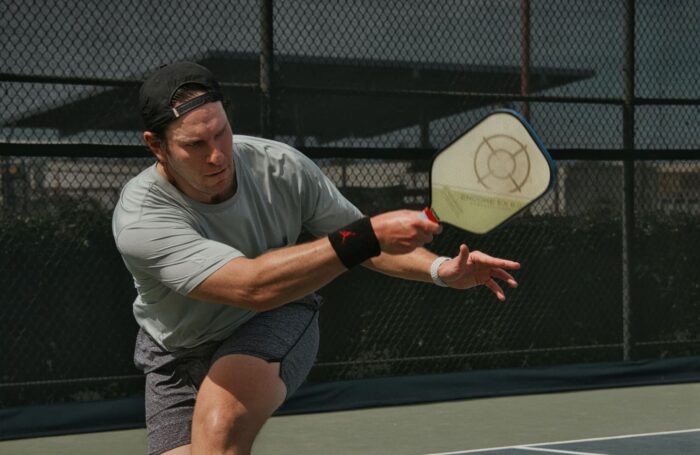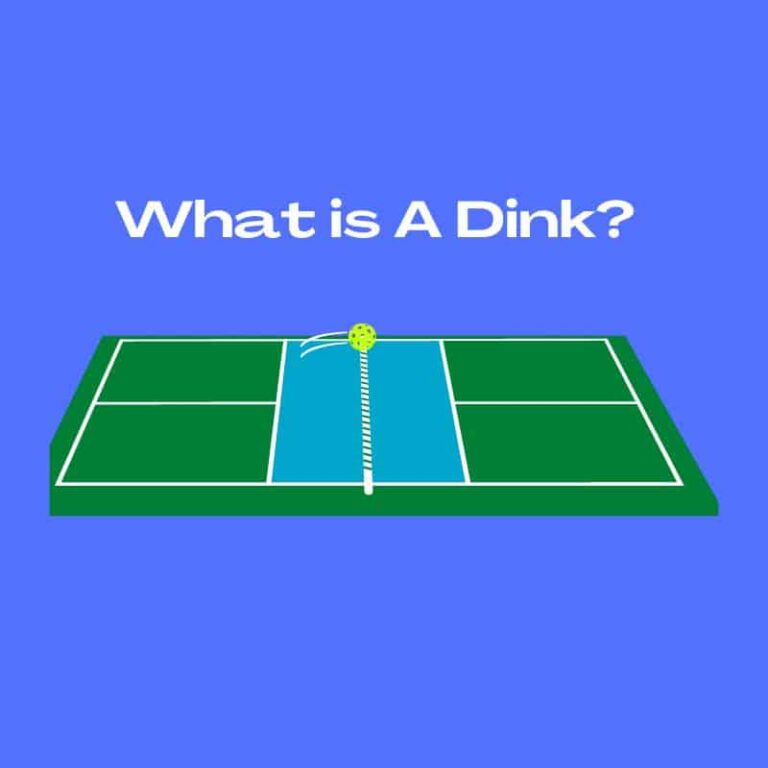7 Proven Strategies for Executing Effective Lobs in Pickleball
Master the art of the lob in pickleball with our guide, “7 Proven Strategies for Executing Effective Lobs in Pickleball.” Whether aiming to disrupt your opponent’s positioning or regain control of the play, a well-executed lob can be a game-changer.
- Choose the Right Type of Lob
- Perfect Your Paddle Positioning
- Timing is Crucial
- Aim Strategically
- Disguise Your Intentions
- Utilize Top Spin
- Practice Environmental Awareness
Executing an effective lob is no easy feat – it requires a delicate balance of timing, technique, strategic placement, and an understanding of the ever-changing dynamics of the game. From choosing the right moment to leveraging environmental conditions, these strategies will enhance your lobbing skills and help you capitalize on this vital technique.
1. Timing Your Lob Perfectly
Timing is everything when it comes to lobbing. You don’t want to be the player who lobs too soon, giving your opponents ample time to prepare their counterattack. Conversely, waiting too long could leave you vulnerable and out of position, negating the potential advantage of the lob.
The key is to keep a watchful eye on your opponents’ positioning and body language. Are they leaning forward, ready to pounce on the next shot? That’s your cue to send that sucker sailing over their heads. Watch for moments when they’re off-balance or out of position, and capitalize on those opportunities with a well-timed lob.
Here are a few situations that present ideal lobbing opportunities:
- When your opponents are both stationed at the non-volley zone, poised to attack
- After a particularly aggressive shot from your opponents that has them stretched or off-balance
- When your opponents seem to be anticipating a different type of shot, like a dink or drive
Pro Tip: Don’t be afraid to mix up your shot selection. A crafty opponent might start anticipating your lobs, so keep them guessing by throwing in a few dinks or drives to keep them on their toes.
2. Choosing the Right Lob: Offensive vs. Defensive
Not all lobs are created equal. There are two distinct lobs to choose from: offensive and defensive. Knowing when to deploy each one is crucial for maximizing their effectiveness and keeping your opponents off-balance.
Offensive lobs are your secret weapon when you want to catch your opponents off-guard and seize control of the point. These bad boys are flatter and designed to curve just over their reach, landing behind them before they can even blink. Use these when your opponents are hugging the non-volley zone like it’s their security blanket. A well-placed offensive lob will have them scrambling back, and you’ll be cackling like a maniac as you watch them struggle to regain their footing.
On the other hand, defensive lobs are your trusty sidekick when you need to buy some time and reset the point. These lobs have a higher arc, giving your opponents more time to respond but also allowing you to reposition yourself on the court. When your opponents are dictating the pace of the game and you find yourself on the defensive, a well-executed defensive lob can be a lifesaver, giving you a chance to catch your breath and regroup before launching your counterattack.
| Lob Type | Description | When to Use |
|---|---|---|
| Offensive | Flatter trajectory, curving just over opponents’ reach | When opponents are at the non-volley zone, to seize control |
| Defensive | Higher arc, giving opponents more time to respond | When opponents are controlling the play, to reset the point |
Knowing when to employ each variation of the lob is a skill that will come with experience and a keen understanding of the ebb and flow of the game. Don’t be afraid to experiment and see what works best for your playing style and the specific situation you find yourself in.
3. Perfecting Paddle Position and Movement
 It’s time to get technical. Executing a masterful lob is all about nailing the paddle position and movement. It’s like a choreographed dance, with your paddle as your partner (a slightly less graceful partner, but hey, we’ll take what we can get).
It’s time to get technical. Executing a masterful lob is all about nailing the paddle position and movement. It’s like a choreographed dance, with your paddle as your partner (a slightly less graceful partner, but hey, we’ll take what we can get).
For a killer lob, you’ll want to start with your paddle face open and low, almost parallel to the ground. This gives you the height and trajectory you need to clear those pesky opponents. As you swing through, keep that paddle face open and let it brush up towards the sky, like a majestic bird taking flight (except this bird is made of composite and has a grip).
And let’s not forget about the all-important follow-through. Imagine you’re trying to scratch an itch on the back of your head – that upward, vertical motion is exactly what you need for a smooth, controlled lob. It’s all about letting the paddle do the work, rather than muscling the shot with your arm.
Here’s a quick breakdown of the proper lob motion:
- Start with paddle face open and low, nearly parallel to the ground
- As you swing, keep the face open and brush upwards
- Finish with a high, vertical follow-through (like scratching the back of your head)
Visualize the perfect lob motion, practice it slowly, and soon it’ll become second nature, like riding a bike (except significantly less dangerous and way more fun).
4. Strategic Placement of Lobs
Sure, you can lob the ball over your opponents’ heads, but where’s the fun in that? The true art lies in strategic placement, targeting those spots on the court that are hardest for your opponents to reach.
First things first, always aim for the backhand shoulder of your opponent. It’s like their kryptonite – a shot over that shoulder, and they’ll be spinning in circles faster than a top. And don’t just lob to the baseline, either. Mix it up by dropping those suckers short, deep, or anywhere in between to keep your opponents guessing and constantly adjusting their positioning.
But here’s the real pro move: study your opponents’ tendencies and weaknesses. If one of them struggles with mobility or has a weaker backhand, bombard that side with lobs galore. It’s like psychological warfare, but with pickleballs instead of mind games (well, maybe a few mind games, too).
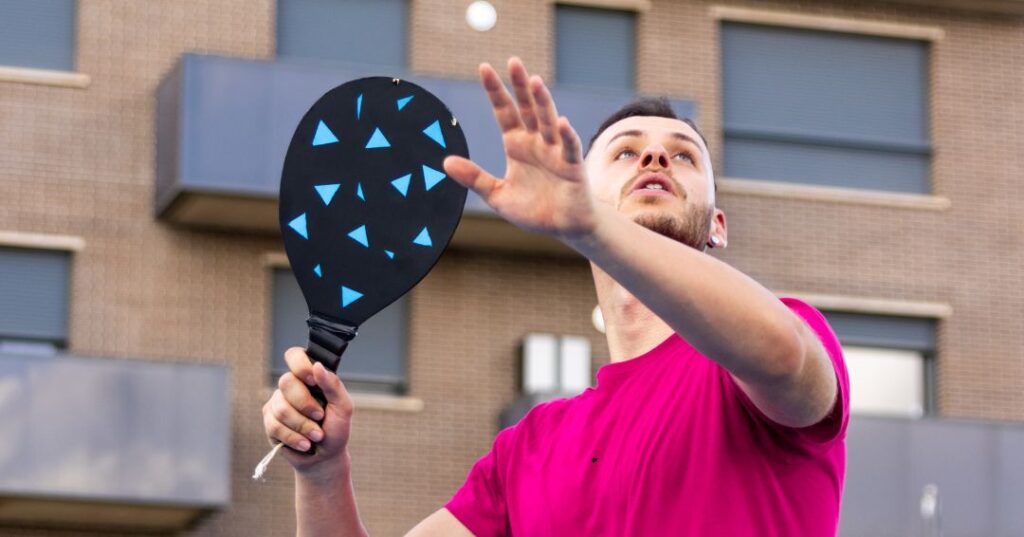
Some key areas to target with your lobs:
- Backhand shoulder of your opponents
- Short angles, forcing wide court coverage
- Deep corners, making them retreat
- Wherever they seem weakest or most uncomfortable
And let’s not forget about those pesky environmental factors. If there’s a strong wind or blinding sun, use it to your advantage by lobbing into those elements, making it even harder for your opponents to track and return the shot.
5. The Art of Disguise in Lobbing
Pro tip: mix up your grip and stance ever so slightly before unleashing your lob. A subtle shift in your body language can be enough to throw off even the most seasoned opponents, leaving them flat-footed and helpless as your lob sails over their heads.
Mastering the art of disguise takes time and practice, but once you’ve got it down, you’ll be able to keep your opponents guessing until the very last second, leaving them scrambling to react to your deceptive lob shots.
6. Utilizing Top Spin on Your Lobs
I
It’s time to take your lobs to the next level. We’re talking about adding some serious topspin to those bad boys, turning them into unpredictable, bouncing beasts that’ll have your opponents scrambling like mad.
Now, generating topspin on a lob might sound like a tall order, but fear not – we’ve got you covered with a step-by-step guide to mastering this technique.
- Start with a firm grip on your paddle, but don’t strangle it like a stressed-out python. You want a nice, relaxed grip that allows for a smooth, fluid motion.
- As you prepare to swing, keep that paddle face open and pointed slightly upwards, like you’re trying to catch a few rays of sunshine (but way cooler, obviously).
- Now comes the tricky part: as you make contact with the ball, brush up and over it with a slightly downward motion, imparting that delicious topspin. It’s like giving the ball a little spin-cycle before sending it on its merry way.
- Follow through with a high, vertical finish, letting that paddle swing all the way up and over your head (just watch out for any low-flying birds or overhanging branches).
Adding topspin to your lobs might take a bit of practice, but once you’ve got it down, you’ll be able to unleash a whole new level of unpredictability on your opponents. Those topspin lobs will be bouncing and skidding all over the place, leaving your foes utterly bewildered and struggling to time their returns.
Pro Tip: Start by focusing on imparting just a touch of topspin, then gradually increase the spin as you become more comfortable with the technique. Too much topspin too soon might send those lobs sailing long or wide.
7. Leveraging Environmental Factors
This last strategy is all about using the great outdoors to your advantage. You see, when you’re playing pickleball, you’re not just battling your opponents – you’re also facing off against the elements themselves. But instead of cursing the wind or the sun, you can actually harness these forces to make your lobs even more devastating.
First up, let’s talk about the wind. A strong breeze can be your best friend when it comes to lobbing, as it can add extra curve and unpredictability to your shots. Aim your lobs into the wind, and watch as they take on a mind of their own, dancing and darting through the air like a drunken butterfly (but way cooler, obviously). Your opponents will be left flailing and floundering as they try to track the ball’s erratic flight path.
Now, the sun is a trickier adversary, but it can still be used to your advantage. If the sun is blazing down on one side of the court, lob those bad boys right into the glare, making it nearly impossible for your opponents to track the ball. It’s like playing with a built-in strobe light, but without the seizure risk (probably).
But wait, there’s more! Don’t forget about court conditions, too. If the surface is particularly slick or bouncy, you can use that to your advantage by hitting lower, skidding lobs that’ll have your opponents slipping and sliding all over the place (just be careful not to join them on their unintentional slip ‘n’ slide).
Environmental Factors to Leverage:
- Wind 🌬️: Lob into the wind for added curve and unpredictability
- Sun ☀️: Aim lobs into the glare to make them harder to track
- Court Conditions 🏟️: Adjust lob height and spin based on surface slickness or bounciness
The key is to remain aware of these environmental factors throughout the match and to adapt your lob strategy accordingly. A little bit of court awareness can go a long way towards giving you an edge over your opponents.
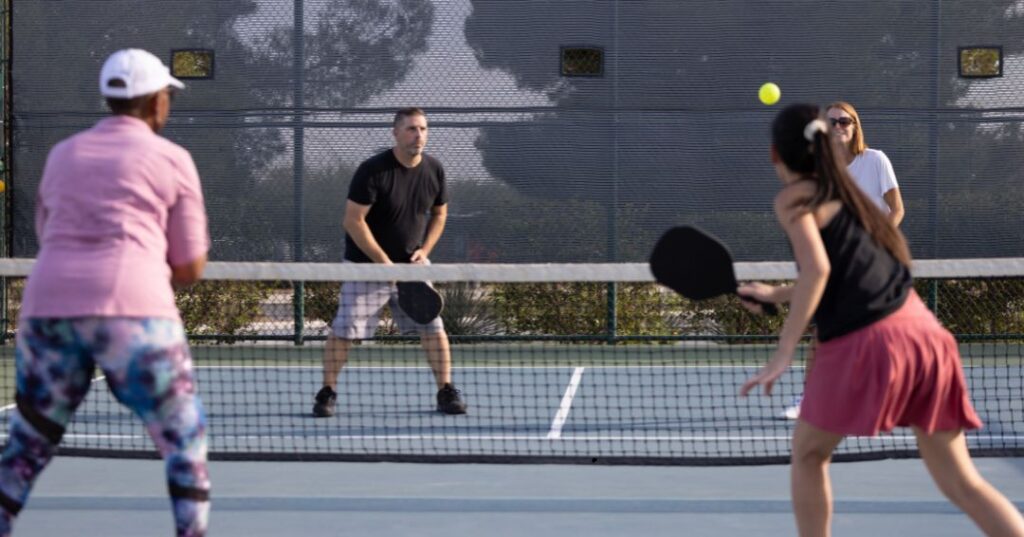 Conclusion
Conclusion
Well, there you have it, seven proven strategies to help you unleash your inner lob master and leave your opponents in a pickle-y predicament. From nailing the perfect timing to leveraging the elements themselves, we’ve covered all the bases to ensure your lobs are nothing short of lethal.
But remember, mastering the lob is a journey, not a destination. It’ll take practice, patience, and a willingness to experiment and adapt on the fly. Embrace the learning process, have fun with it, and before you know it, you’ll be lobbing like a seasoned pro.
And who knows? With these strategies in your arsenal, you might just become the stuff of pickleball legends – the player whose lobs are whispered about in hushed tones, the one who left a trail of befuddled opponents in their wake. Just don’t let it go to your head, okay? We still need to be able to fit through the door after all those pickled compliments.
Call to Action
So, what are you waiting for? Grab your paddle, head to the courts, and start putting these lob strategies into practice. And if you’re really serious about taking your game to the next level, why not check out our video tutorial series or sign up for a local clinic? With a little guidance from the pros, you’ll be lobbing like a boss in no time.
Just remember: no matter how good you get, always stay humble, have fun, and never stop practicing those lobs. After all, a well-executed lob is like a work of art – something to be admired, appreciated, and maybe even framed (if you can find a frame big enough).
So, what are you waiting for? The pickleball court is calling, and those lobs aren’t going to hit themselves. Let’s do this!

